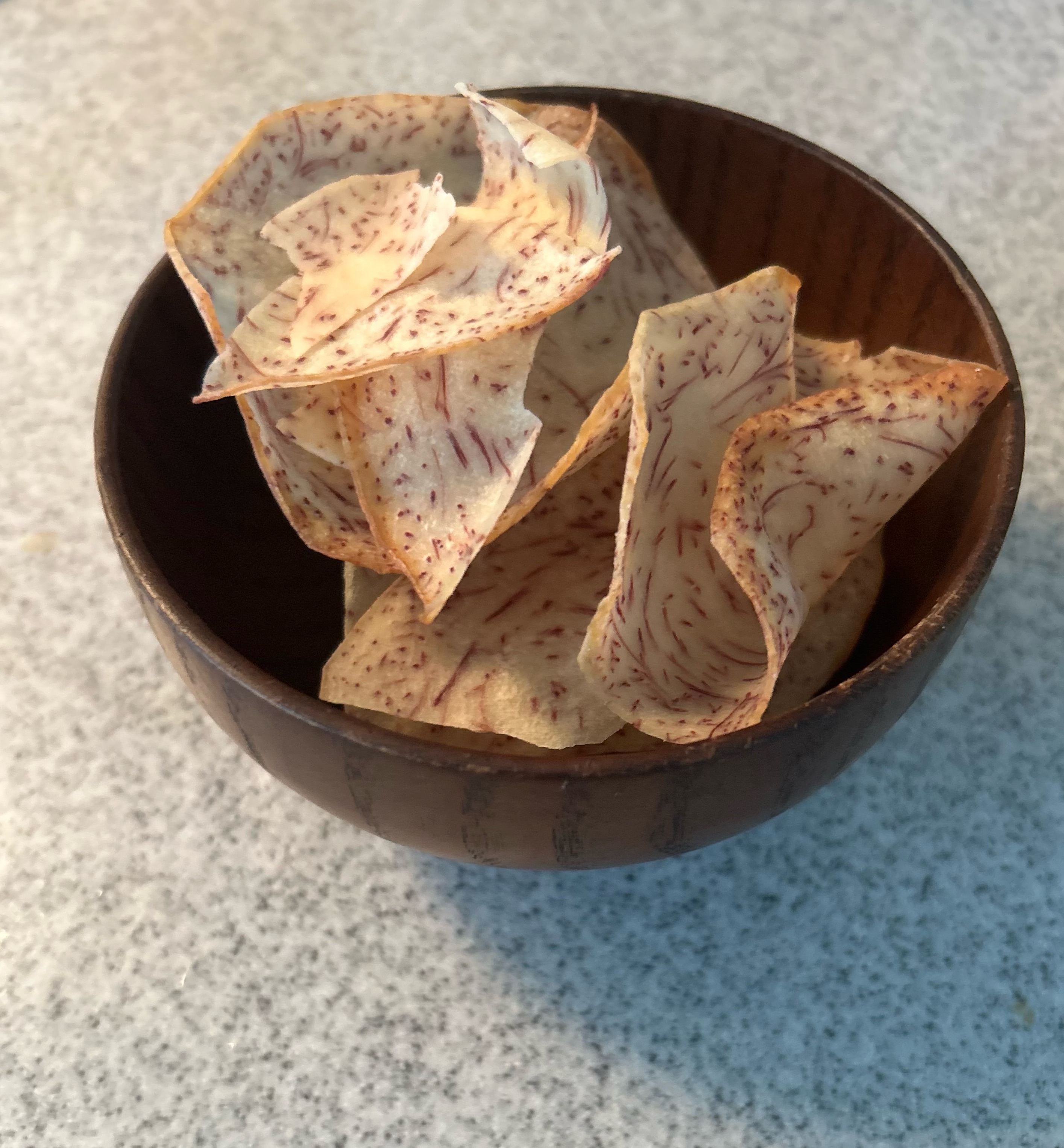As a resident of Hawaʻi, I could not have a nutrition blog without talking about the Taro root! Taro is an extremely important part of Hawaii’s identity and heritage. It plays a vital role in traditional practices, the local diet, and the economic landscape. Read more about taro below and make your own taro chips using this easy recipe!
Taro Chips Recipe
Ingredients:
- 2 cups taro root, peeled and thinly sliced
- 1 tablespoon olive oil
- 1/2 teaspoon sea salt
- 1/2 teaspoon black pepper
- 1/2 teaspoon garlic powder (optional)
Instructions:
- Preheat the oven to 375°F (190°C).
- In a bowl, toss the taro slices with olive oil (or coconut oil), salt, pepper, and garlic powder (if using).
- Arrange the slices in a single layer on a baking sheet lined with parchment paper.
- Bake for 15-20 minutes or until the chips are crisp and golden brown.
- Allow the chips to cool before serving.
Taro in Hawaiian Culture and Economy
Taro (kalo in Hawaiian) has been a staple in the traditional Hawaiian diet for centuries. It is a versatile ingredient used in various traditional dishes, such as poi, which is a starchy paste made by mashing cooked taro roots. Taro cultivation has been an essential part of Hawaii’s agriculture for generations. Taro fields (water-filled terraces), known as “loʻi kalo,” can be found in various parts of the islands. Taro is actually a very healthy starch. It is also very important to Hawaiʻiʻs economy, as taro farming provides economic opportunities for local farmers. The cultivation of taro in loʻi kalo patches helps maintain water quality, prevent erosion, and contribute to the overall sustainability of the land. Therefore, not only is it healthy and good for the Hawaiian economy, but it is very good for the environment and preservation of natural land of Hawaiʻi. Its mild, nutty flavor adds a unique touch to many dishes. Furthermore, the process of cultivating and processing taro has historically been a communal activity, fostering a sense of community and shared responsibility.
In terms of taroʻs history as a sacred plant, according to Hawaiian story (moʻolelo), Wākea (the sky father), and goddess, Hoʻohokukalani (the heavenly one who made the stars), wished to have a child. Their first attempt resulted in a still birth -an infant in the shape of a bulb. The body of the stillborn child was buried near their home. It is said that from this buried child grew a taro plant. The couple got pregnant again and had a boy which the gods named Hāloa. He would become the ancestor of all Hawaiian people. Therefore, Hawaiians are thought to be related to taro. Hāloa was to respect and look after his older brother for all of eternity. The elder Hāloa, the root of life, would always sustain and nourish his young brother and his descendants (ref: Manoa Heritage Center).
What about nutrition? Are they better than potatoes?
Taro is a root vegetable that is a great source of fiber, vitamins, and minerals. It is lower in calories and has a lower glycemic index compared to potatoes. Taro also contains more dietary fiber, which is beneficial for digestion and good for your gut microbiome.
While potatoes are a good source of vitamin C, potassium, and other nutrients, they are rich in carbohydrates. Furthermore, certain types of potatoes, especially when fried or processed, have a higher glycemic index and can be less healthy.






